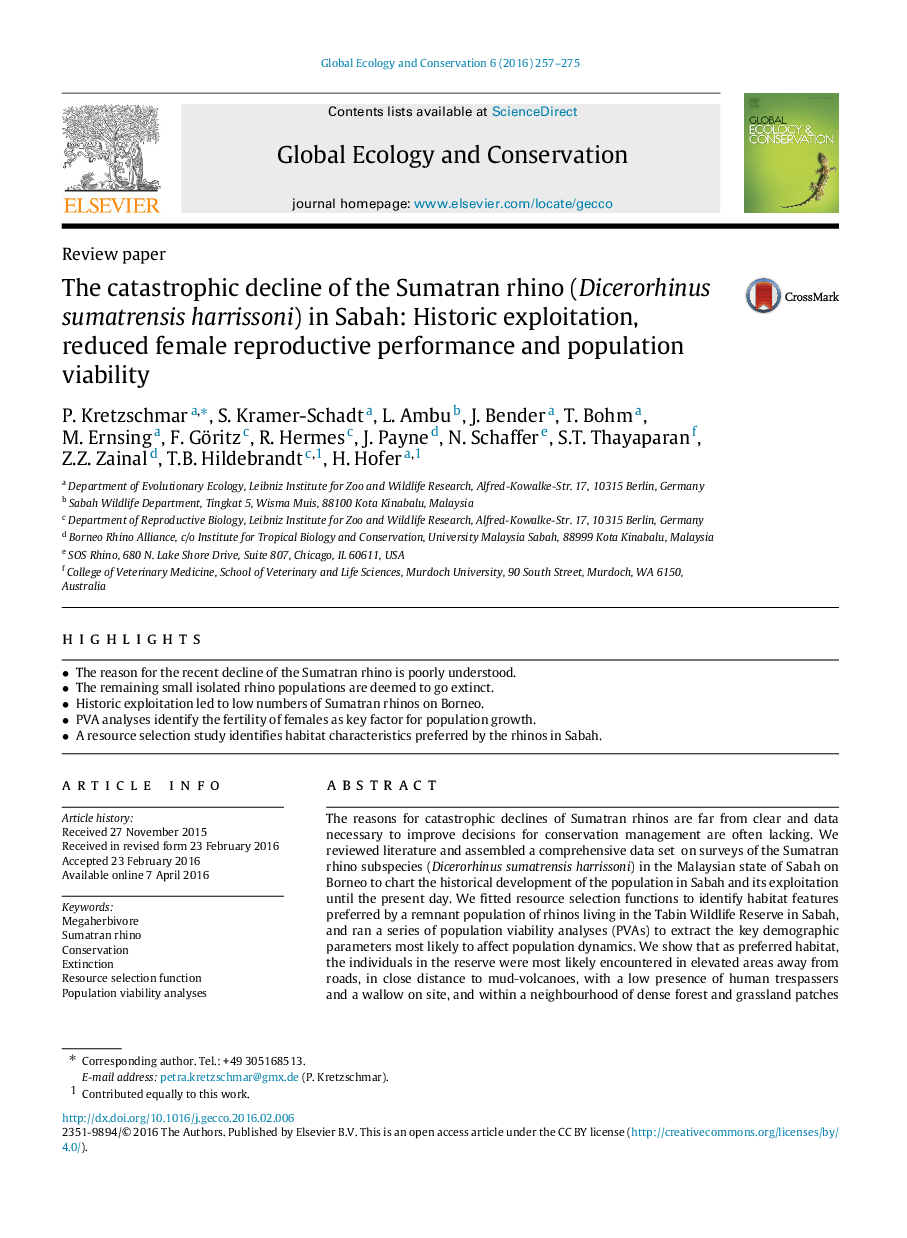| Article ID | Journal | Published Year | Pages | File Type |
|---|---|---|---|---|
| 4379650 | Global Ecology and Conservation | 2016 | 19 Pages |
•The reason for the recent decline of the Sumatran rhino is poorly understood.•The remaining small isolated rhino populations are deemed to go extinct.•Historic exploitation led to low numbers of Sumatran rhinos on Borneo.•PVA analyses identify the fertility of females as key factor for population growth.•A resource selection study identifies habitat characteristics preferred by the rhinos in Sabah.
The reasons for catastrophic declines of Sumatran rhinos are far from clear and data necessary to improve decisions for conservation management are often lacking. We reviewed literature and assembled a comprehensive data set on surveys of the Sumatran rhino subspecies (Dicerorhinus sumatrensis harrissoni) in the Malaysian state of Sabah on Borneo to chart the historical development of the population in Sabah and its exploitation until the present day. We fitted resource selection functions to identify habitat features preferred by a remnant population of rhinos living in the Tabin Wildlife Reserve in Sabah, and ran a series of population viability analyses (PVAs) to extract the key demographic parameters most likely to affect population dynamics. We show that as preferred habitat, the individuals in the reserve were most likely encountered in elevated areas away from roads, in close distance to mud-volcanoes, with a low presence of human trespassers and a wallow on site, and within a neighbourhood of dense forest and grassland patches preferably on Fluvisols and Acrisols. Our population viability analyses identified the percentage of breeding females and female lifetime reproductive period as the crucial parameters driving population dynamics, in combination with total protection even moderate improvements could elevate population viability substantially. The analysis also indicates that unrestrained hunting between 1930 and 1950 drastically reduced the historical rhino population in Sabah and that the remnant population could be rescued by combining the effort of total protection and stimulation of breeding activity. Based on our results, we recommend to translocate isolated reproductively healthy individuals to protected locations and to undertake measures to maximise conceptions, or running state-of-the-art reproductive management with assisted reproduction techniques. Our study demonstrates that a judicious combination of techniques can do much to illuminate causes of population declines, improve decision making for conservation management and possibly prevent similar developments in populations of other species of similar ecological standing.
